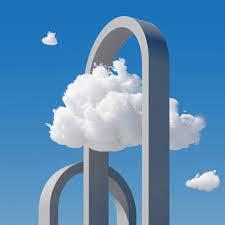Firing up India’s clean cooking fuel plan

Usage of liquefied petroleum gas (LPG) in rural Indian households has surged, partly due to India’s flagship clean cooking programme, but beneficiaries of the scheme consume less LPG than general customers per year, reports a new study.
Household air pollution from burning solid fuels such as coal, charcoal, wood, dung and agricultural waste poses a major environmental health risk. This is especially true for women and children in India, who have a disproportionately high mortality and disease burden due to air pollution, which is second only to malnutrition as a risk factor for disease, according to a Lancet Planetary Health report.
The Indian government’s clean cooking policy launched in 2016, the Pradhan Mantri Ujjwala Yojana (PMUY), provides subsidised LPG for the world’s largest clean cooking energy programme of its kind — more than 80 million poor households had benefited by September 2019.
The study, published this month in the journal Environmental Research Communications, found that beneficiaries of the PMUY scheme consume on average almost two large LPG cylinders (14.2 kilograms each) less annually than their general customer counterparts, even after controlling for baseline socioeconomic and demographic differences.
“Wealth, education, caste, household size, and experience with LPG have been commonly suggested as reasons for the consumption gap between PMUY beneficiaries and general customers,” Carlos Gould, a doctoral candidate at Columbia University’s Mailman School of Public Health and lead author of the study, tells SciDev.Net. “But our findings suggest that there are other important factors driving the consumption disparity.”
Gould and his colleagues analysed two waves of a survey of over 8,500 households across six of India’s energy-poor states — Bihar, Jharkhand, Madhya Pradesh, Odisha, Uttar Pradesh and West Bengal — to evaluate the drivers of LPG adoption and its use. The first wave was conducted prior to the scheme in 2015 while the second took place in 2018.
Laudable strides in the ownership of LPG connections from 2015 to 2018 were documented, partly owing to the PMUY scheme. In 2015, 75 per cent of households lacked LPG; this figure dropped to 45 per cent in 2018. Around 40 per cent of new LPG owners in 2018 were enrolled through PMUY.
But in 2018, 83 per cent of the 9,072 survey participants continued to burn solid fuels, mainly firewood, for at least some of their cooking. This practice of using multiple fuel types, termed fuel stacking, has been noted in other studies.
One potential barrier to LPG consumption is the distance travelled to obtain cylinder refills. Fewer PMUY beneficiaries have refills delivered to their doorstep than general customers. An exploratory analysis showed that PMUY beneficiaries tended to live in remote villages.
“Increased travel distance may discourage individuals from obtaining LPG and encourage them to ration their existing LPG resources,” explains Gould. Consequently, polluting solid fuels that are easier to collect are likely used to fill the gaps.
“Efforts to reduce the distances required to get an LPG cylinder refill could increase LPG consumption among households that use both LPG and solid fuels,” Gould says, adding that a customer-centred policy design process focusing on improving usability could be considered.
Gould says that greater support should be given to households that do not use LPG often and continue to use solid fuels. Among other measures, the authors suggest increasing the number of local distributors to shorten the travel distance to acquire refills in remote rural areas.
Ajay Pillarisetti, assistant professor of environmental health at Emory University in the US, says that the results are “reassuring” as numerous studies have reported that the consumption levels of PMUY customers are lower than those of general customers.
He stresses that barriers to the exclusive usage of LPG must be identified and overcome to achieve and maintain healthy behaviours.
Future work, says Pillarisetti, should target supply constraints such as by “provision of a low-cost second cylinder connections of either five or 14 kilograms, more broad networks of LPG providers including potential ‘mini’ distributors”. Linkages with other social welfare schemes could target additional subsidies to the rural poor, he adds.
https://www.scidev.net/asia-pacific/news/firing-up-india-s-clean-cooking-fuel-plan/
- Information Technology
- Office Equipment and Supplies
- Cars and Trucks
- Persons
- Books and Authors
- Tutorials
- Art
- Causes
- Crafts
- Dance
- Drinks
- Film
- Fitness
- Food
- Giochi
- Gardening
- Health
- Home
- Literature
- Music
- Networking
- Altre informazioni
- Party
- Religion
- Shopping
- Sports
- Theater
- Wellness


